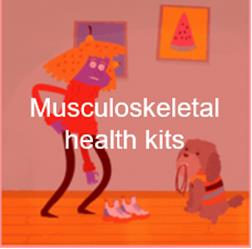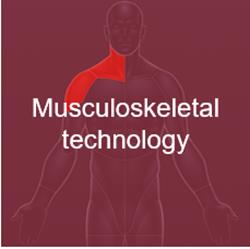Today, musculoskeletal disorders rank as one of the top conditions driving medical claims globally.
Claims are primarily associated with general back pain, as well as disc and soft tissue disorders, validating a widely cited explanation of poor ergonomics and less daily movement since the onset of wide-spread home working.
Here we summarize some of the things employers and insurers should consider to manage this risk and resources available from Generali Employee Benefits to support your initiatives.
Scope of coverage
Non-invasive physiotherapy and education are the foundation of best practice for musculoskeletal disorders and yet medical policies in some countries exclude physiotherapy due to the absence of out-patient benefits. This may be due to the interplay between the private and public healthcare sector or can be local market practice.
It is common to even see comprehensive private medical benefits, that limit non- invasive treatment like physiotherapy, osteopathic and chiropractic treatments, but fully cover surgery. In these situations, we observe a greater utilisation of in-patient procedures which are not always necessary, more expensive and more invasive, leading to longer workplace absenteeism
Education & steerage into alternative care pathways
Education and patient steerage can be instrumental tools to reduce the incidence and cost of musculoskeletal conditions. For example, 47% of people with long-term MSK conditions in England take five or more medications on a regular basis but would rather opt for alternative treatments.
Similarly, navigation through available treatment options or decision-making counselling can reduce the incidence of in-patient claims where less invasive and costly treatment, such as physiotherapy, are available (via the insurer, employer or public health system).
Physical activity interventions
People who have a long-term MSK condition are two times as likely to report being physically inactive than those without, yet 70% said they would like to be more active.
Regular physical activity reduces a person’s risk of joint and back pain by 25%, but the working population’s daily movement has decreased in the last two years. Therefore, physical activity interventions form an important part of an employer’s health & wellbeing strategy by providing education on the value of movement and encouraging more movement through digital or physical activity challenges.
Working practices and policies
When consulting with clients on suitable interventions we consider the sector and type of work being undertaken.
Sedentary office-based workers have very different needs to workers in production facilities/warehouses or those in sales or distribution roles. The best place to start is exploring data from health & safety incident reports, ergonomic assessment reports and evaluating work design and processes, such as repetitive movements common in many production lines, to identify the source of risk and therefore the most effective interventions.
Workplace interventions may include ergonomic assessments, changes in work design to reduce repetition of certain movements, home working packages to improve home ergonomics, wellbeing interventions such as physical activity programmes, education and digital therapeutic tools to supplement medical insurance provision.
The case for employer investment is strong with musculoskeletal conditions accounting for 28% of all work-related ill health cases in the UK in 2020/21, musculoskeletal conditions requiring 38% more lost time than the average injury/illness (11 days vs 8-day average) and increased long term disability (musculoskeletal conditions are the world’s leading cause of disability and only 59.4% of working-age people with a musculoskeletal condition are in work in the UK).
Mental health and wellbeing
MSK and Mental Health issues are two of the three main drivers for disability claims globally and their inter-relationship makes the risk of disability claims significantly larger. People with depression are at greater risk of developing back pain and inversely, chronic pain makes people 3x more likely to experience mental health issues. The Centre for mental health UK estimates that people living with a physical health condition are twice as likely to have poor mental health. Many private medical insurers globally do not cover mental health treatment, so when the primary issue is stress or depression, the risk of musculoskeletal co-morbidity is not foreseen, and interventions are not implemented to prevent the secondary health issue.
Digital tools to reduce cost & improve outcomes
Digital musculoskeletal platforms have emerged to bridge the gap in public and private insurance coverage as well as providing lower cost treatment pathways, where medically appropriate. These digital interventions combine symptom assessment, therapeutic exercise programmes, patient education and cognitive behavioural interventions overseen by licensed physiotherapists operating two-way communication channels with the member.
The power of these platforms lies in their ability to identify symptoms quicker, provide quick access to low-cost care and improve member adherence to treatment programmes; all of which significantly improves healthcare outcomes.
This is unsurprising when data shows that 49% of patients with lower back pain give up physiotherapy after four sessions8. The lack of convenience of many treatments continues to be an issue: over a quarter of pain sufferers report that they haven’t had treatment because they haven’t had the time9. Among those who would consider PT but have not pursued it, cost is the highest barrier to treatment.
With the rise in telemedicine acceptance and increased utilisation amongst those seeking access to care, patient appeal for musculoskeletal platforms is also growing. Almost three-quarters (74.3%) of all pain sufferers would consider a virtual physical therapy solution and those using the services rate them highly with >90% completion rates and 80+ NPS scores
Resources available from GEB to support your musculoskeletal strategy
GEB has a range of resources made available for free or at preferential rates.



